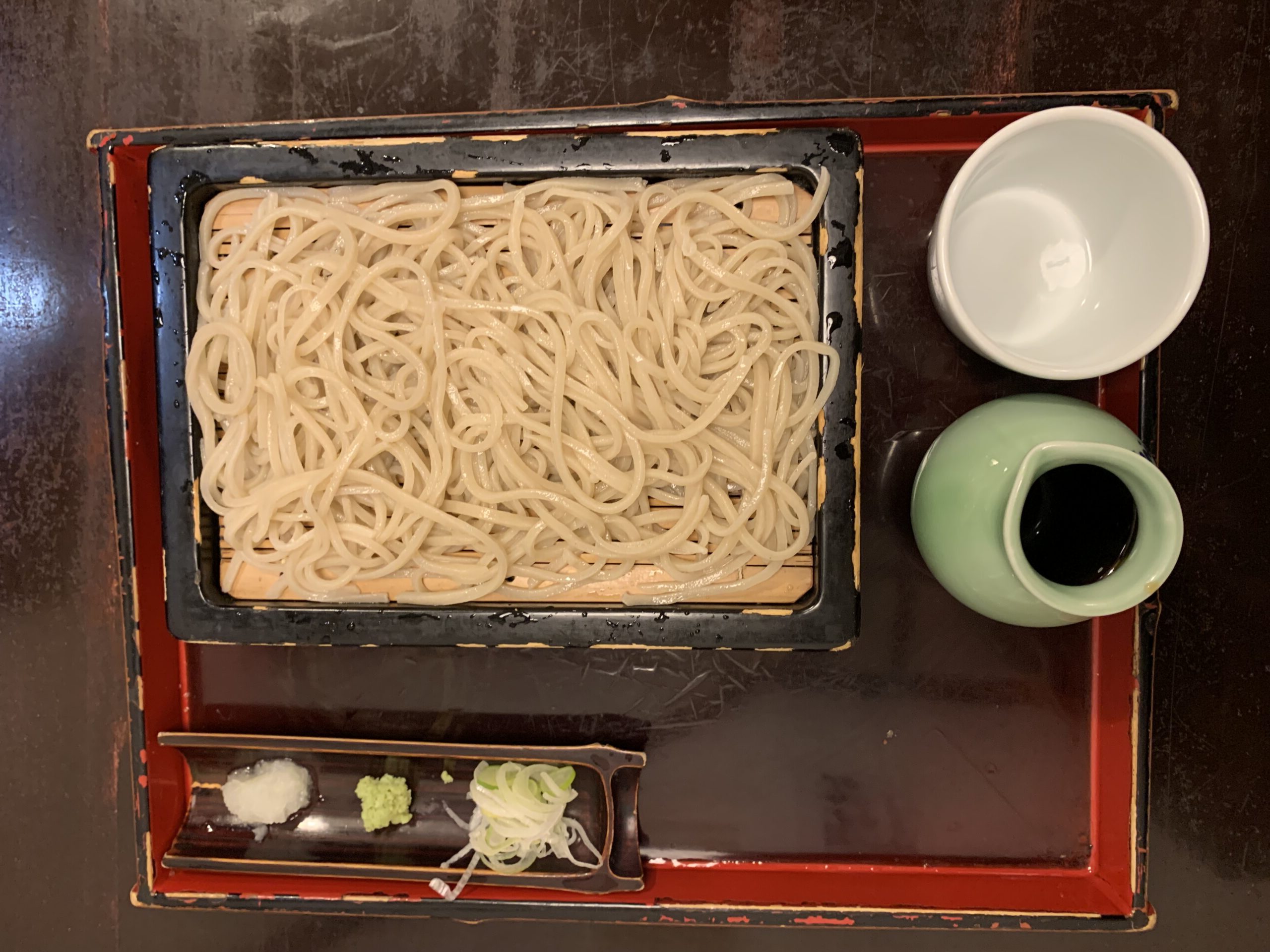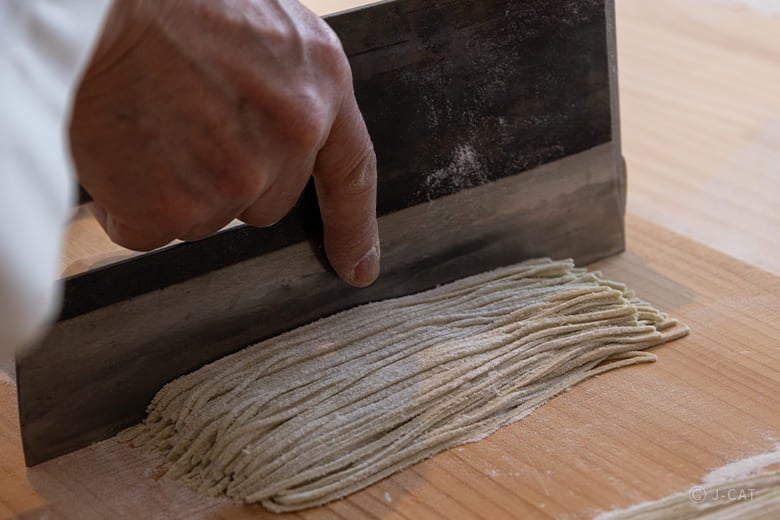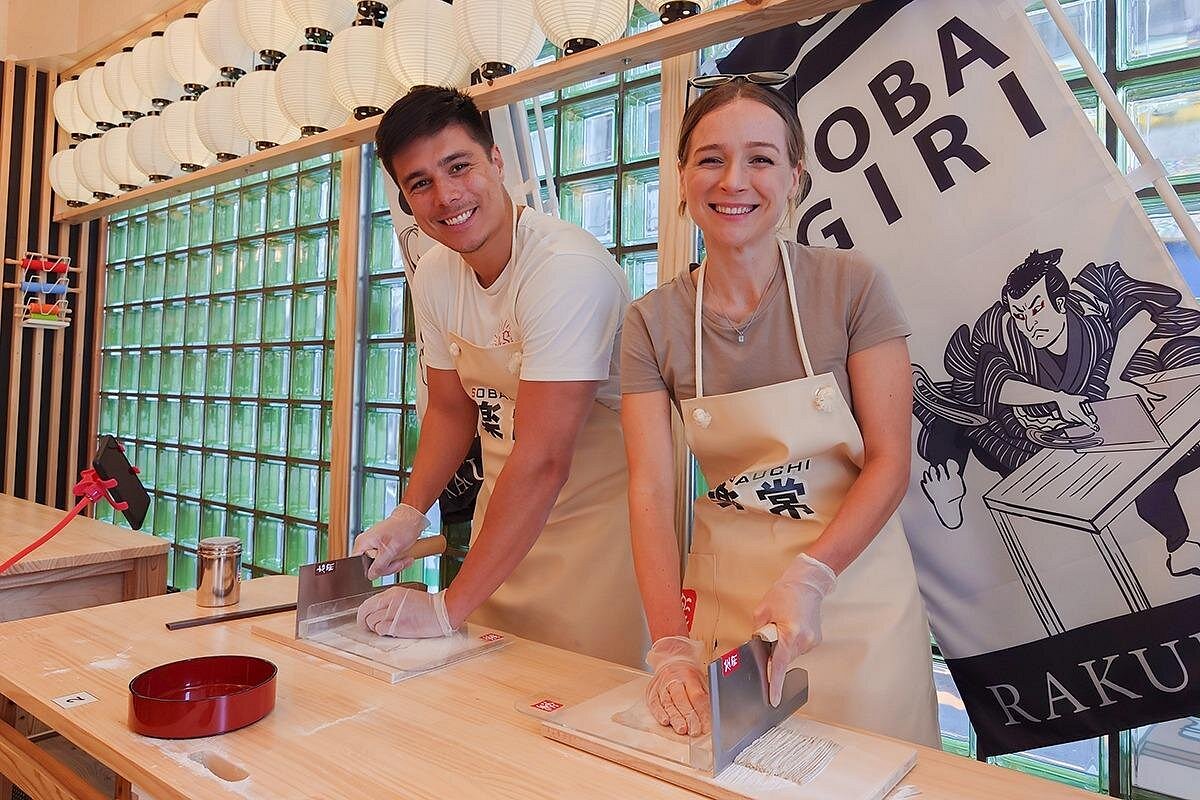
Soba is like the soul food for Tokyoites, a hearty staple that’s also considered fast food. Japan is divided into Udon (Wheat Noodle) and Soba (Buckwheat Noodle) regions, but Tokyo overwhelmingly falls into the Soba Region. Lately, there’s been a growing number of Udon shops in Tokyo, but Soba Joints hold a special place in our culture.
So, here, I’m gonna drop some manners knowledge for all you cool gents and classy ladies out there.
Soba-Ya (Joint) with Two Faces
Don’t just see a Soba-Ya as a regular noodle joint. While it serves its purpose as a place for meals, a Soba-Ya is also a welcoming space for sophisticated adults. Essentially, it’s a spot to enjoy a casual drink and unwind. Cool adults understand the dual roles – using it as a noodle shop around noon, say at 12 o’clock, and transitioning into a relaxing spot after the hustle of lunchtime, after 1:30 o’clock. It’s not really cool to hog a seat, sipping on alcohol during the busy lunch hours. Just doesn’t sit right, you know?
Just be mindful of one thing – Allergies
Just want to make sure you’re mindful about something – allergies, especially when it comes to Soba Joints. Soba allergies can be quite potent, so it’s important to be cautious. If you’ve ever felt queasy or had a throat discomfort after eating foods with buckwheat flour, like galettes or crepes, it might be best to steer clear of Soba Joints.
Also, if you start feeling unwell or experience any discomfort during eating Soba, don’t hesitate to stop right away. If, by any chance, you find it hard to breathe, don’t think twice about calling an ambulance – in Japan, it’s free to use.
1. Basic Knowledge on Soba
If you’re at an authentic Soba-Ya, they often offer three types of soba. These are Inaka Soba, Sarashina Soba, and Regular Soba.

1-1. Inaka Soba (Country Style Soba)
Inaka Soba is made from milling buckwheat, including the outer part of the grain, giving it a strong aroma. It has a slightly coarse texture and a grayish tint. The charm lies in its simple and rustic flavor.

1-2. Sarashina Soba
Sarashina Soba, on the other hand, is milled from the central part of the buckwheat grain. It’s white in color, with a delicate, slightly sweet flavor. The charm lies in its sophisticated and refined taste.

1-3. Regular Soba
Regular Soba falls somewhere in between of above two and is often made by mixing about 20% wheat flour. The appeal here is its subtle and well-balanced flavor, something that can be delicious for everyone without being too overpowering in terms of individual taste preferences.
The way soba is presented in the photo, with just toppings (Mori Soba or Zaru Soba), is a traditional way of enjoying it.
First – Dipping Sauce Preparation: Start by pouring a small amount of soy-based dipping sauce (Tsuyu) (right side in the picture) into the dipping bowl.
Second – Toppings and Condiments: Customize your dipping sauce by adding toppings, like chopped green onions, wasabi, and grated daikon radish, according to your preference.
Third – Noodle Dipping: Take a portion of the Soba noodles with your chopsticks and dip them into the Tsuyu sauce.

1-4. Finishing Touch: Soba-Yu
After enjoying Mori Soba or Zaru Soba, it’s common to be served Soba-Yu, hot water used to boil the Soba noodles. Soba-Yu contains the nutritious essence of the Soba and is used for lightening up the dipping sauce. It’s a popular tradition to drink this mixture at the end. Since the dipping sauce is quite concentrated, diluting it with Soba-Yu creates a delicious broth. Moreover, consuming warm soup is believed to stimulate the digestive system, promoting better digestion. It’s a delightful and health-conscious practice, hitting two birds with one stone.
Of course, in Soba-Ya, there are not only cold Soba dishes like the one described above but also warm options (Kake Boba) made with a savory broth. When you have warm Soba topped with tempura, duck meat, or deep-fried tofu, it becomes a delightful and comforting meal, especially during the colder seasons.
2.Enjoy Unwind Time at Soba-Ya
After the hustle of the busy lunch hours, Soba-Ya transforms into a relaxing haven for adults. In winter, enjoy some hot sake, and in summer, savor a cold beer while kicking back. Different places offer a variety of dishes, with tempura and duck grilling being classic choices, for example. However, what you really should try is the Tamagoyaki (Japanese omelet). Made with premium broth, this simple dish is a delight at any Soba-Ya. Of course, finish it off with some Soba!

Deture Point ❶: Authentic Soba-Ya in Nakano – Sarashina Kitaguchi Sohonten (North Gate Main Shop)

If you ever find yourself in Nakano, It is highly recommended to check out one authentic Soba-Ya, Sarashina Kitaguchi Sohonten. The ambiance is quite charming with a small garden inside the shop, offering an authentic Soba experience. If the timing is right and you can snag a spot at the counter, you might even get to witness the art of soba-making right before your eyes. However, if you prefer a more leisurely experience, the second floor has tatami-mat rooms where you can enjoy a laid-back meal by reserving a set course in advance, even during the bustling lunch hours.
Keep in mind that reservations are only available in Japanese, so having someone who speaks Japanese might be handy (Tel Number 03-3389-4218). Following the Soba-Ya custom, they accept cash payments only. It’s truly an authentic experience!
PR Experience Real Culture Japan
Make a Traditional Comfort Food your Own: Hand-make Soba Noodles the Classic Way, with an Eminent Soba Master
presented by Wabunka;
PR Experience Culture Japan
Experience Big soba knife Soba Making Class in Tokyo Kappabashi presented by Viator;

This area has changed quite a bit, but places like this shop haven’t transformed all that much, I guess. Well, nearby you’ve got Broadway, a mecca for subculture, and Maid Cafes and stuff, so it’s not entirely stuck in the past. “Putting new sake into an old bottles” ain’t such a bad idea, right?



